The relief work in Afghanistan was a major joint effort
The rescue and evacuation operation in Afghanistan was in many ways unique and historic. Finland evacuated more than 400 people from Afghanistan in three weeks. This was possible through cooperation with national and international actors and between different departments of the Ministry for Foreign Affairs. The relief team at Kabul Airport played a key role, but the input of dozens of people both in the Ministry for Foreign Affairs in Helsinki and in many foreign missions was also required.
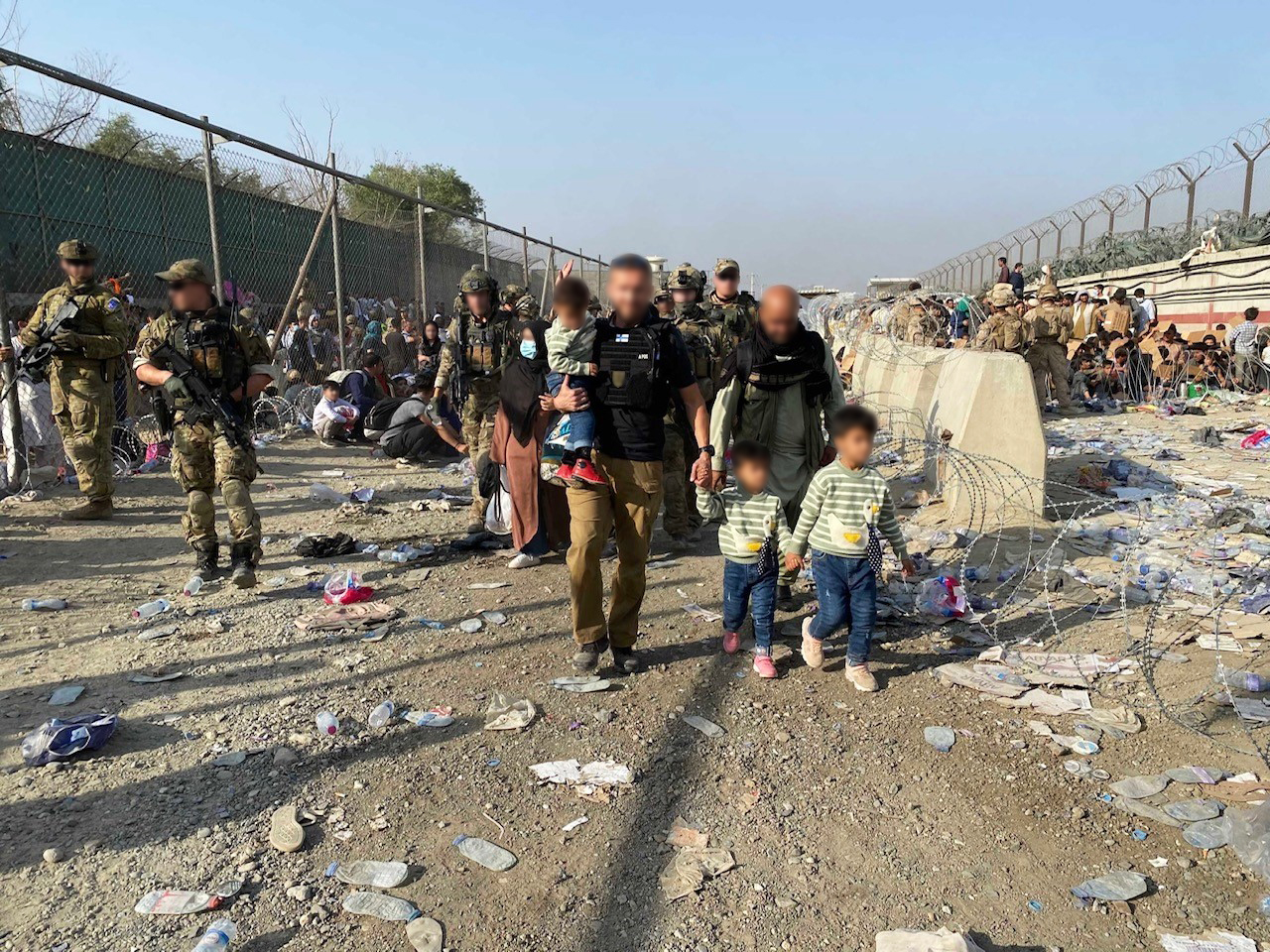
From planning directly to the operation phase
The Ministry for Foreign Affairs started to plan the evacuation of locally employed staff from the host country in early spring. Even though the matter had been considered over the years, the situation was new. “As far as I know, Finland has not been in a situation where locally employed staff would have been evacuated, at least in recent history,” says Matti Keppo, Team Leader responsible for Afghanistan.
At the beginning, we had to find answers to fundamental and complex questions. What kind of threat would locally employed staff face? What kind of legal instruments would be available? Who would be eligible to be evacuated?
During the summer, the situation in Afghanistan deteriorated at an increasing pace. The evacuation preparations were completed side by side with operative planning. “While the government proposal was being drafted, we made preparations relating to logistics and travel documents and, of course, followed the Taliban’s movements.”
During the relief effort at the airport, Keppo was responsible for local coordination. His team sent messages to the locally employed staff, trying to help them to reach Kabul Airport and then board a plane to Finland.

Controlled evacuation of embassy personnel against time pressures
In Afghanistan, the evacuation decision was triggered by the rapid military progress of the extremist Taliban towards Kabul, where it ultimately arrived declaring Afghanistan an Islamic Emirate. The evacuation decision launched the Embassy’s evacuation, which meant that a number of pre-determined and rehearsed actions, based on the evacuation and preparedness plan, had to be taken.
Missions located in a high-risk operating environment, such as Kabul, have preparations for possible fast-changing situations in place. Arrangements have been made in advance to speed up and facilitate evacuation, and the career staff at the mission are always prepared to react to special situations.
In practice, the evacuation of the embassy staff in Kabul also took place within in a limited timeframe, but in a controlled manner.In addition to ordinary evacuation measures, the last days in Kabul were particularly important because of the preparation of the evacuation of the Afghan and consular customers on Finland’s evacuation list. Based on the Government decision, persons to be evacuated to Finland had to be interviewed both face-to-face and by telephone, and the arrangements required, among other things, drafting of temporary travel documents and evacuation flight and logistical preparations.
However, many things changed along the way as the situation developed. The original plan was to evacuate the mission’s Finnish staff and locally employed Afghan staff on the same aircraft to Finland. Due to the deteriorating security situation, it was not possible to get the locally employed staff to the airport according to plan. In the end, Finland’s original evacuation aircraft were unable to land at the airport because it was not possible to safeguard security inside the airport and in the airfield runways. All western countries faced the same situation.
However, things at the airport soon calmed down to such an extent that Finland managed to continue the evacuation of Finnish citizens and Afghans with the help of the Foreign Ministry's relief team and the Defence Forces’ unit tasked with safeguarding the efforts.
“I would have liked to return to Kabul to assist in the evacuations. On the other hand, my local knowledge was also useful for the Foreign Ministry’s evacuation team in Finland, which supported the relief work in Kabul. I was involved in guiding and contacting the evacuees and in coordinating travel arrangements and access to Kabul Airport. From time to time, I took care of communication duties related to evacuation,” says Deputy Head of Mission Nelli Mikkola.
The Ministry for Foreign Affairs participated in the evacuation work:
Team at Kabul Airport (Special Envoy and team = 5 persons)
Department for the Americas and Asia (coordination, management of the relief effort at the Ministry)
Department for Consular Assistance (responding to contacts, persons eligible for consular assistance, flights, family reunification matters)
- 24/7 Service Centre (phone calls and email)
- Consular rapid response team (assistance at airports, travel documents)
Telecommunications Centre (phone calls)
Missions abroad (assistance in flight arrangements, assisting evacuees in transit)
Legal Service & Political Department (legislative matters, preparation and presentation of decisions made by Parliament/Government/President of the Republic)
Department for Communications (coordinating and responding to media inquiries, press conferences and communications)
Relief team in chaotic Kabul Airport
The Ministry for Foreign Affairs sent two senior officials to Kabul Airport to take care of the evacuation after the Taliban had occupied Kabul.It was soon clear that the situation at the airport was chaotic, and the Ministry for Foreign Affairs requested the Defence Forces for help in safeguarding the relief effort. The Foreign Ministry’s relief team in Kabul was also strengthened by three persons. The President of the Republic made a decision on the deployment of a Defence Forces’ unit to Kabul Airport to support the Finnish relief team
“The situation at Kabul Airport and its gates was chaotic, but our objective was very clear. The arrival of the Defence Forces’ unit was crucial in that it safeguarded our work and gave us an opportunity to succeed. The conditions kept changing to some extent all the time, which is why we had to adapt our plans and their implementation but, considering the circumstances, we succeeded quite well. It is clear that without the efforts of the Defence Forces’ unit, we would not have been able to assist as large a group of people as we ultimately did. Cooperation with Finnish soldiers was seamless, and our common goal – to save as many evacuees as possible to Finland – kept the machinery running round the clock,” says Antti Putkonen, Deputy Head of Mission, who jumped to the evacuation team from the Embassy of Finland in Vienna. He received a telephone call from the Ministry and travelled to Kabul on the same day.
Antti Putkonen was one of the five persons working in the Foreign Ministry's relief team at Kabul Airport and, together with Special Representative Jussi Tanner, was responsible for official decisions. His responsibilities included, in particular, checking the documents of the persons to be evacuated and, if necessary, official decisions, recording their data on the passenger lists, preparing travel documents and coordinating the flights. Different issues and problems that had to be solved were handled in collaboration with the military group of the country that was considered capable of solving the issue in question best.
Tanner and Putkonen tried to make sure that every evacuee had the right to enter Finland. However, the relief effort was our first priority and there were situations that required rapid decisions on humanitarian grounds. It was very difficult to unambiguously establish the identity of persons pleading for help across a broad sewage canal in the chaos at the Abbey Gate.
”

“Some of them could have been seeking protection at the airport for several days, fighting their way in the middle of a mass of people from dawn till dusk. Many were very emotional when they finally managed to make eye contact with Finnish officials and soldiers and, after verification, were able to get inside the airport, away from the chaos of the Abbey Gate where they had been risking their lives. At the last phase of the actual relief work, people were guided and ultimately lifted from the sewage canal at the gate area up to safety. For many, it was a very emotional moment, and succeeding in it was important to us as well. In concrete terms, it showed that our approach worked well and we succeeded in guiding people to safety.”
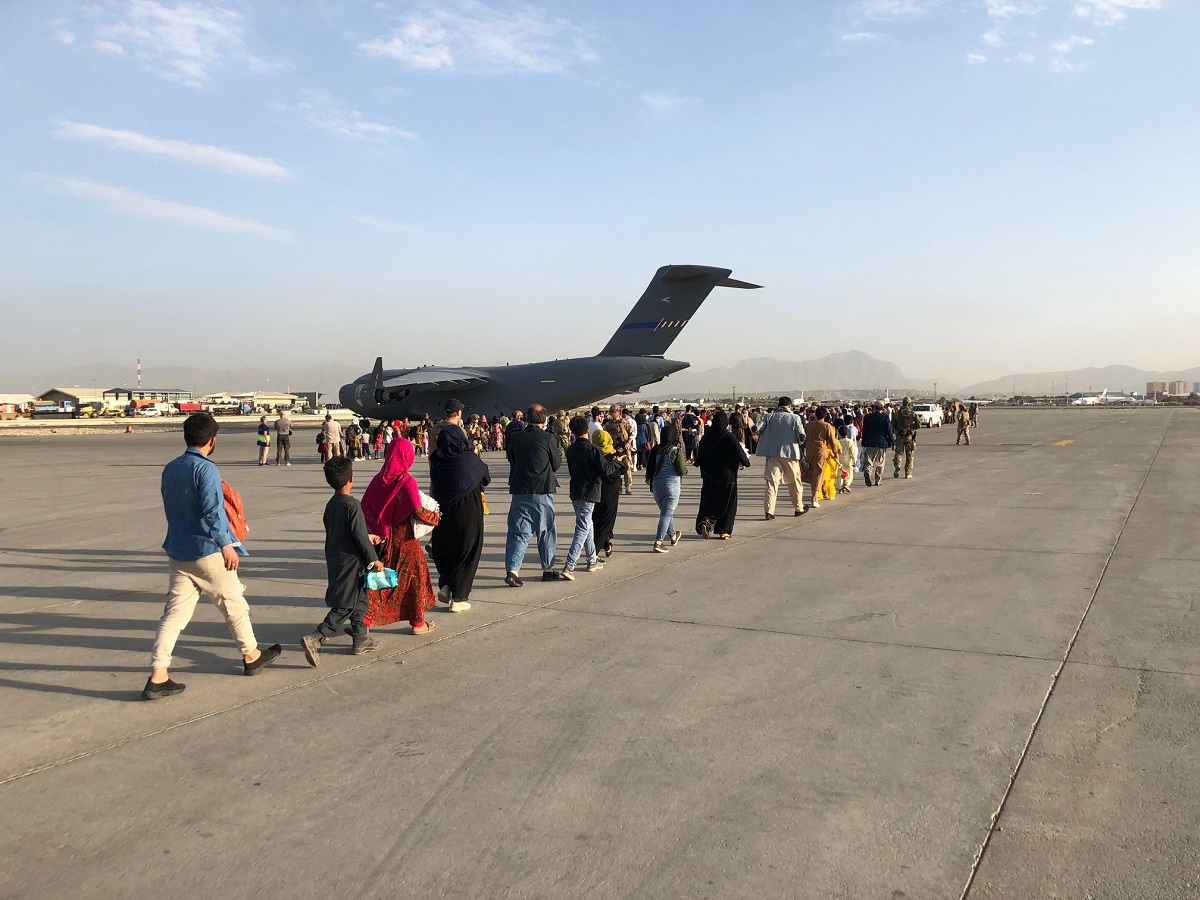
Relief work was led from Helsinki
In the Ministry, the Department for the Americas and Asia was responsible for coordinating the evacuation. Veikko Kiljunen, Director of the Unit for South Asia, headed the work from Helsinki. Late every evening, Kiljunen led Skype meetings that brought together approximately seventy public officials from different ministries and organisations to get an overview of the most recent developments. They went through the events of the day and the next steps of the relief effort. The relief team at Kabul Airport attended the Skype meetings and gave an update of the situation from the scene.
The office of the Minister for Foreign Affairs gave active support to the planning and implementation of the work. In the most pressing phases of the process, the Foreign Minister held several briefing sessions for the media per week.
Several remote meetings focusing on operational matters were held every day, both among the core team consisting of about 25 people and in smaller configurations. The work was intensive and working days were long. Without remote connections, close contacts and extensive participation in the meetings would have been impossible in the midst of the crisis and hectic schedules.
“Colleagues in the Foreign Ministry demonstrated a high degree of competence, commitment and flexibility in the constantly changing and unpredictable situation. Support was received from all parties and levels. The cooperation between other authorities also worked seamlessly and in a particularly collegial spirit. It was clear that we were dealing with a historic operation and that the time window for our relief effort was extremely short considering the challenging nature of the task,” Kiljunen says.
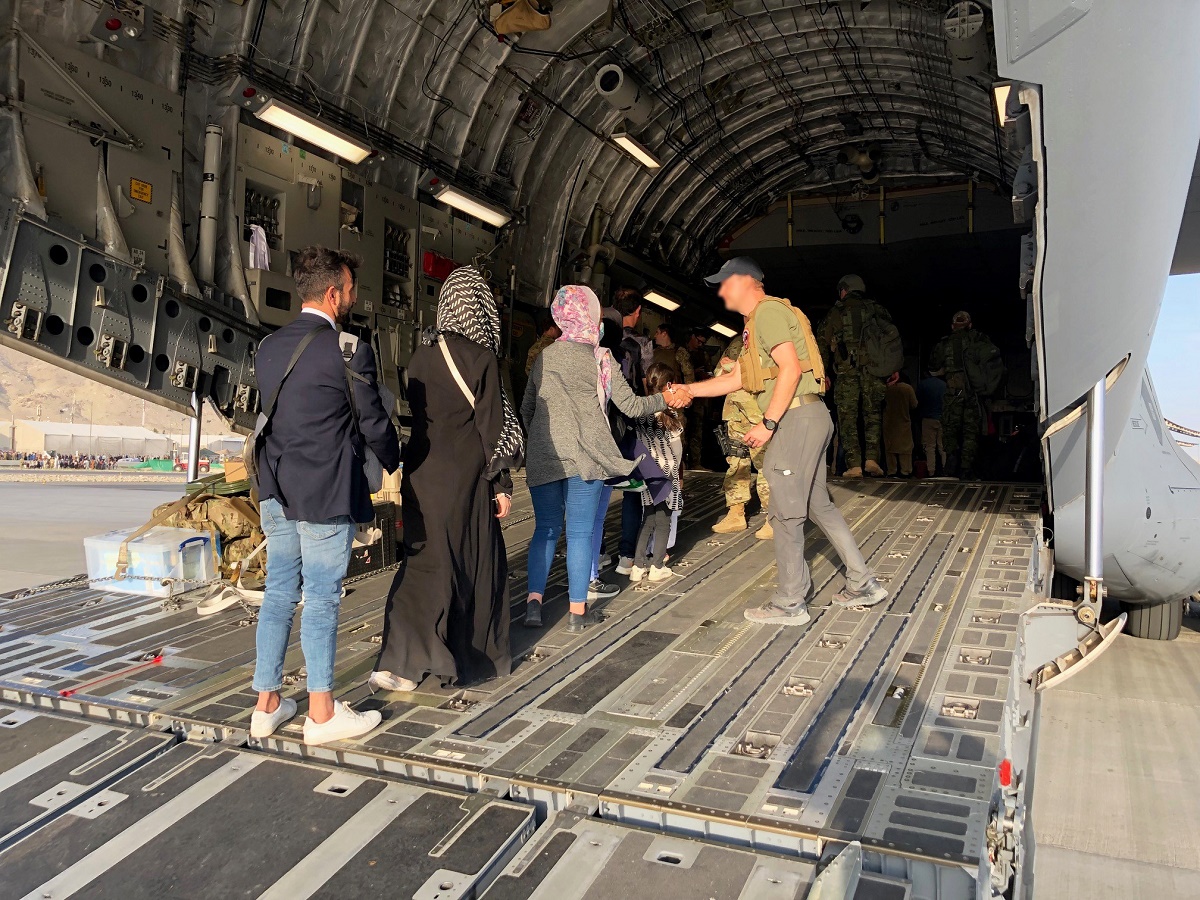
Backlogs in the 24/7 Service Centre
The telephone number of the Foreign Ministry’s 24/7 Service Centre is for emergencies only. The Service Centre operates around the clock on every day of the year.
The events in Afghanistan led to an avalanche of calls and messages to the Centre, nicknamed “PÄIKE”. More than 5,000 people contacted PÄIKE. Both those in need of assistance and their concerned family and friends contacted the Service Centre. The majority of the contacts came from persons who are not eligible for assistance under the Consular Services Act. Many callers asked about ongoing family reunification processes and their chances of getting family members to safety from the midst of the crisis.

Telephone calls revealed people’s distress
When the crisis started, the Ministry for Foreign Affairs urged all Finnish citizens to leave the country without delay. At that point, eight people had submitted their travel plans and contact details in Afghanistan, but the number increased tenfold as soon as the crisis had erupted. Many were surprised at how fast the Taliban was advancing and how rapidly commercial flights from Kabul ended.
Second Secretary for Administrative Affairs Virpi Hanhikoski from the Unit for Consular Assistance received calls and email messages from Finns in need of assistance and their loved ones during the relief effort. Colleagues from other units of the Ministry assisted in handling the deluge of phone calls.
The Unit for Consular Assistance used the information received through the phone calls and email, and examined the situation of consular assistance recipients, that is, Finnish citizens and people residing in Finland with a residence permit. Persons entitled to receive consular assistance in Afghanistan were contacted by phone or through other messages and advised to try to get in the vicinity of the airport. Their whereabouts were established as accurately as possible, after which the information was passed on to the relief team at Kabul Airport.
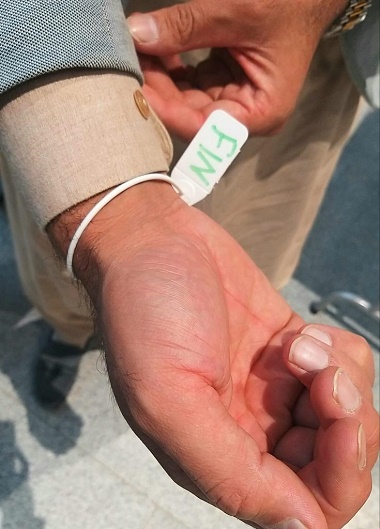
"FIN". Photo: Ministry for Foreign Affairs
“We could sense people’s distress in the phone calls and messages, but our possibilities to help them in the hectic situations were very limited. However, there were also moments of joy when we succeeded in helping people, and I would like to thank all colleagues who participated in the effort,” says Hanhikoski.
Team Tbilisi
Finland’s original objective was to carry out the evacuations from Afghanistan on a direct charter flight from Kabul to Helsinki. When it became clear that this was not an available alternative, other ways were sought. A military base in Tbilisi, Georgia, was selected as the transit hub for evacuation flights from Kabul.
“I was informed of the plan on the evening of Sunday 15 August. On Monday morning, we started to build up a so-called Team Tbilisi, headed by Finland's Honorary Consul in Georgia Eka Metreveli. Finland was liaising with Sweden, Norway, the Netherlands and the network's coordinating country Hungary, as well as the Delegation of the EU to Afghanistan and Frontex, which was involved for other reasons. The network started to cooperate and exchange of information actively without delay. This helped in creating a picture of the situation also in Helsinki,” says Roving Ambassador Kirsti Narinen.
Caption: The flights took evacuees to different countries. Those arriving in Finland were given name tags “FIN”. Photo: Ministry for Foreign Affairs
Consular rapid response team on standby all the time
The Foreign Ministry’s Consular Services is always prepared to respond to crises. It maintains consular rapid response teams that can be sent to help whenever a crisis occurs in some part of the world. A consular rapid response team consists of voluntary staff of the Ministry for Foreign Affairs, who are prepared in turn for a week at a time to travel to a crisis area to support the local Finnish mission.
This time, Security Specialist Pasi Fågel happened to be on the standby list. He was assigned to organise a flight for one group of evacuees from Tbilisi Airport. The rapid response team’s assignment was expanded later and several other team members were sent to Kabul.
Pasi Fågel helped evacuees at Tbilisi Airport to find their way to an aircraft to Finland. Similar work was carried out later during the crisis also in Kuwait.
“At first, the small number of evacuees was a bit annoying,“ Fågel says.
However, the number of people being evacuated increased every day and it was possible to see that many of them felt relieved.
“The most touching experience was to notice that in spite of the difficult situation, some families had been able to take care of their looks when they had left home. Some children were dressed in the best outfit, boys wearing a jacket and corduroys and girls, dressed in a nice dress, carrying a handbag. At the airport transit hall, I saw a pair of siblings sleeping side by side, resting their heads against each other,” Pasi Fågel says.
Helping one person at a time
Finnish embassies in different parts of the world played an important role in the background of this consular crisis together with the Foreign Ministry’s units responsible for matters relating to Afghanistan. On Friday in August, Minna Niemi, who is responsible for consular services and administrative affairs at the Finnish Embassy in Madrid, Spain, received a call that changed her weekend plans: A family to Finland from the EU’s quota refugees from Afghanistan to arrive at Torrejón Airport tomorrow.
“We had to get access passes to the Torrejón air base; find out about travel documents; write a travel letter in Spanish and get the airlines’ view about the letter; prepare questions for interviews; find out about COVID-19 testing; plan the flight route to Finland and find out how to pay the tickets; alert the Honorary Consul to the transit airport; make sure that the border formalities at the airport are in place; contact the local Ministry of Foreign Affairs and Immigration; ask if interpreters are needed; organise transport; and, at the same time, remember to keep the Foreign Ministry’s 24/7 Afghanistan team and the Embassy in Madrid updated and discuss with the EEAS ... The list felt endless and the 72-hour time limit set by Spain did not give mercy,” Niemi describes.
Similar efforts were made in our other embassies, such as in Berlin, Rome, Abu Dhabi and Oslo.
“The crisis in Afghanistan shocks the whole world. Colleagues in Kabul and Finland have worked tirelessly to save hundreds of lives from the crisis area – therefore, the small role of our Mission in Madrid in helping only one family seems almost insignificant compared to the whole effort. But people are helped one at a time. I will always remember the family with children that was evacuated through our Embassy to a new and unknown future,” says Minna Niemi.
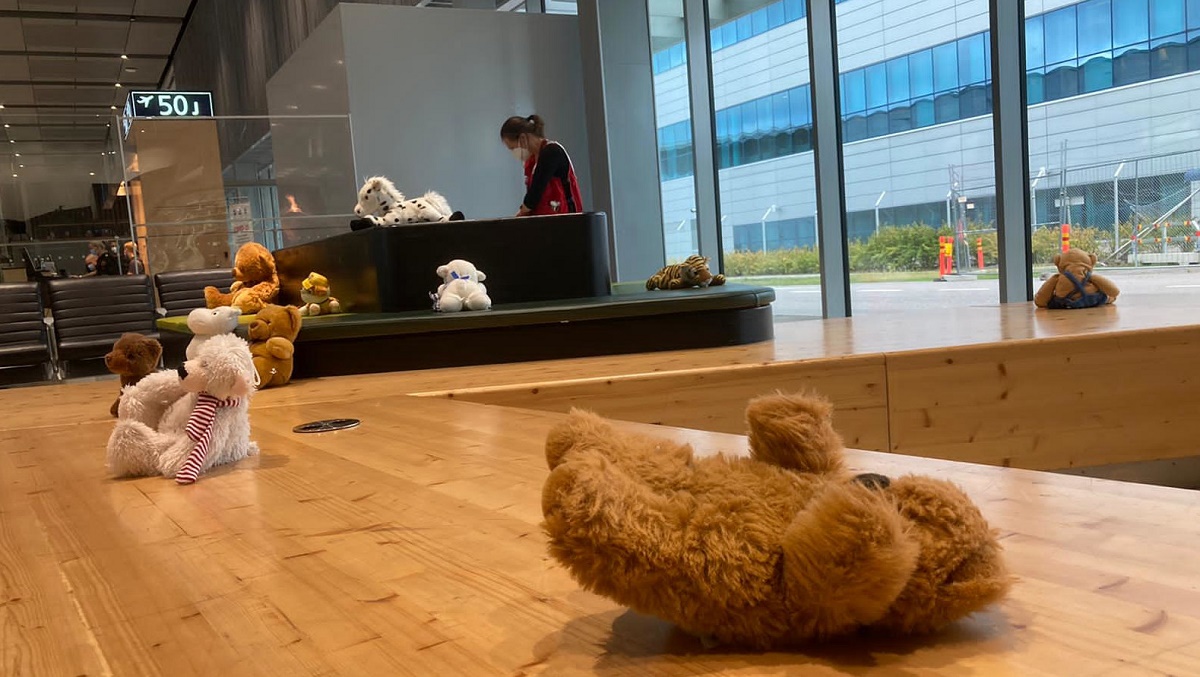
Assistance efforts continue
The Foreign Ministry’s Consular Services continue their assistance work.
“Approximately forty people who have submitted their travel plans and contact details are still in Afghanistan. We continue to keep in touch with them and to explore alternative ways to help them in this difficult situation. We also hope that commercial flights to Kabul will soon resume,” says Director of the Unit for Consular Assistance Outi Saarikoski.
“One of the highlights of the relief effort was to be able to follow the extensive cooperation between the authorities at Helsinki–Vantaa Airport. The evacuees’ relief on arrival safely in Finland was tangible. With all the work and communication behind, it was great to meet people who had been evacuated,” Saarikoski says.
Exceptional event for which preparations had been made
The siege of Kabul was an exceptional event, but preparedness for consular crises and handling such matters is part of the Foreign Ministry’s normal activities. We are prepared for unexpected events and organise related training and exercises to make sure that our staff are capable of adapting activities to the situation at hand. Our efforts in Kabul proved that this works.
“I will remember two things, in particular: First, the Finnish group's excellent team spirit and the evacuees’ gratitude when they were safely evacuated. Second, the one-week joint project where work was ongoing without a break and where we adapted to changing situations and took care of each other while doing everything in our power round the clock to ensure that as many people as possible would be taken to safety. It is difficult to imagine a more valuable professional and human experience,” says Antti Putkonen.
